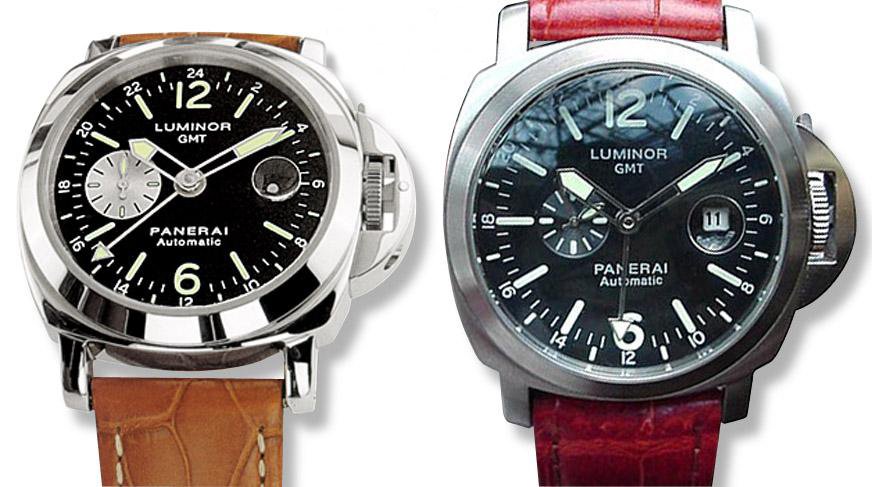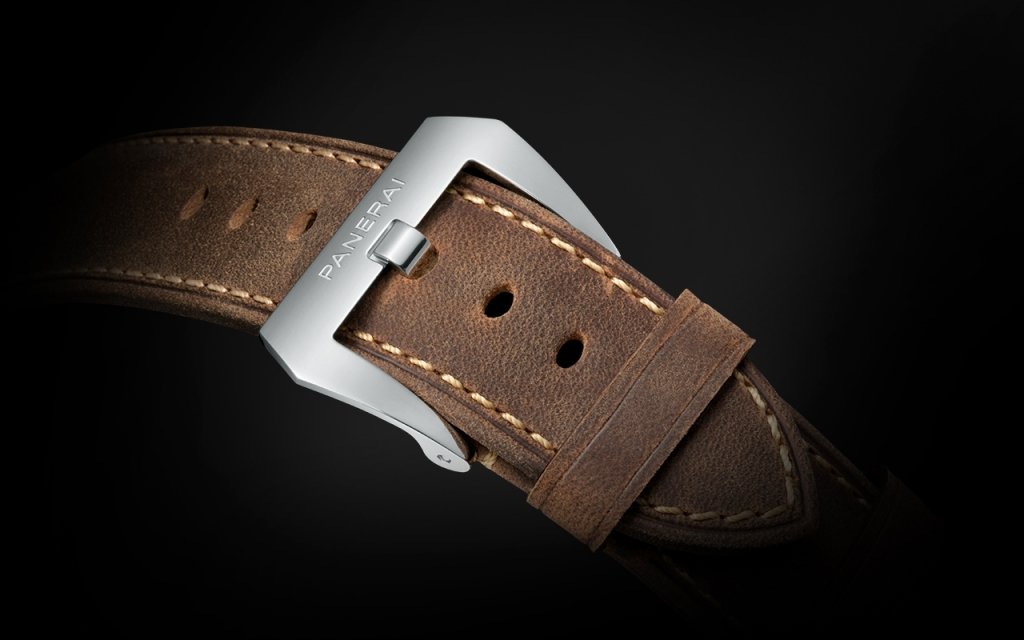How to Spot a Fake Panerai
The Panerai brand has been producing high-quality timepieces since 1860, and they have continued to innovate new designs and new technology to put their watches at the forefront of the industry. The brand remains popular amongst watch enthusiasts because of this drive to constantly and skillfully re-invent themselves. Because the name “Panerai” connotes this forward-moving effort of luxury horological technology, consumers are eager to take part in it—and counterfeiters are eager to take advantage of that. To protect you from falling victim to a fake Panerai watch scam, we have compiled these quick tips to telling an authentic Panerai from a replica.
1. The Dial
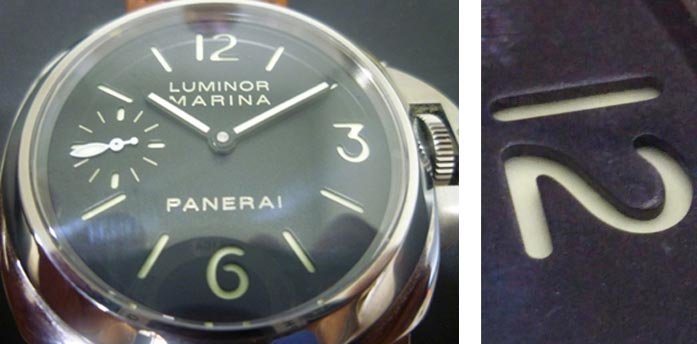
The face of a Panerai Luminor Marina with the correct subdial placement and the “sandwich” dial. Photo by Worthy Living.
The Sandwich Dial
Many counterfeiters have perfected the look of a Panerai dial—at least, at first glance. Like other aspects of finely-made Panerai watches, the devil is in the details. For example, genuine Panerai pieces are outfitted with “sandwich” dials—that is, the green luminescent background that illuminates the markers on the watch is sandwiched between layers of the material that makes up the surface of the dial. If you look closely at the numerals, you might find a layer of green striping through the material. Other variations on the sandwich dial include the “sausage” dial, in which the lume material looks puffy, and the “painted” dial, in which the lume is flat and painted on. The lume style differs between models, so make sure you are very familiar with the genuine Panerai model that you’re looking for as counterfeiters will not pay as close attention to details like this when creating forgeries.
The Subdials
Examine the subdials of the watch, while you’re at it. On an authentic Panerai watch, there isn’t a marker at the 9 o’clock position, so the left subdial will be closer to the outer edge of the dial to make up for it. Counterfeit models will often mistakenly have the left subdial positioned too far to the right because they include a marker at 9 o’clock.
The Hands
Watch hands are often another detail that counterfeiters tend to mess up. On a genuine Panerai, the second hand should be long enough to nearly touch the outer edge of the dial. You should also make sure that the hands of the watch you’re looking at are correct for the piece’s model type. Forgers sometimes switch out the hands between models, so make sure you know what the hands look like when you’re in the market for a specific model.
2. The Case
Panerai prides itself on its incredible craftsmanship, and it is their centuries-old expertise that ensures the longevity of each Panerai piece. The cases on their watches are engineered not only to protect the mechanisms inside but also to ensure the best, most comfortable fit for the watch-wearer for years to come. The minute details that go into that engineering are often forgotten by counterfeiters in favor of saving a few bucks on production costs. These are the details you need to look out for to make sure the watch you’re eyeing is a genuine Panerai.
Engravings
The most obvious tell on a fake watch is the quality of the engravings. Panerai watches are laser-engraved with care so that every word, logo, and number is etched clearly and deeply into the metal. On a replica, the “engravings” will probably have just been stamped in with acid, leaving a sandy finish on the markings, which will become faded and illegible over time.
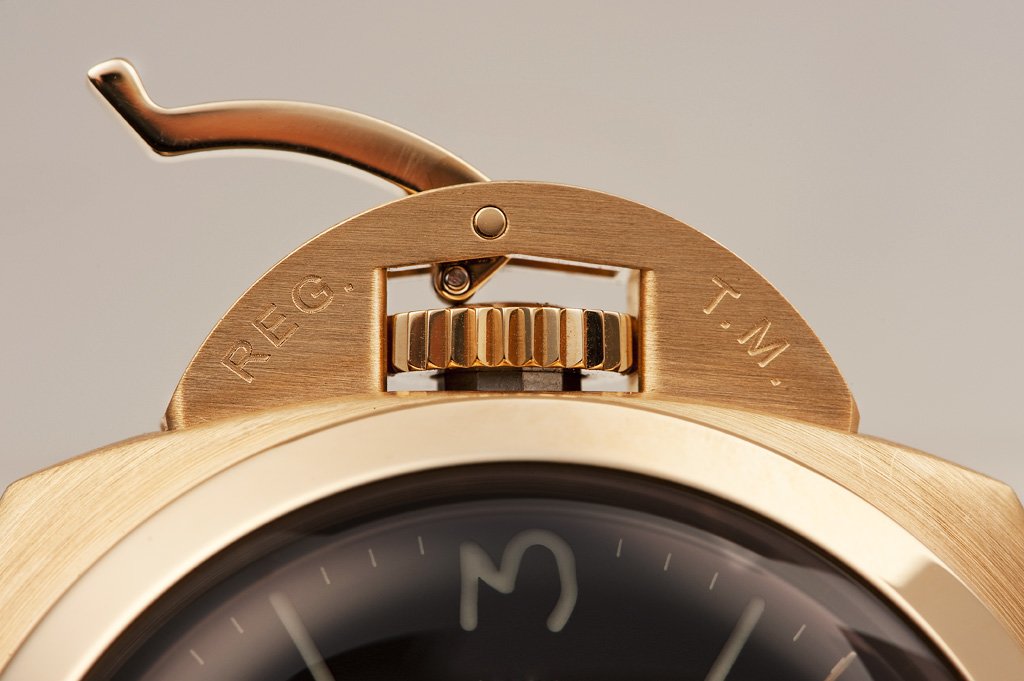
A genuine Panerai crown protector with fine engravings and a handle that fits the protector’s curve. Photo by M. Wilmsen.
The Crown
Panerai crowns are incredibly distinct because of how precise their design is. Firstly, the brand is famous for creating their cases so the crown protector is not a separate piece that has to be screwed on. The crown protector will noticeably be detached from the case on a counterfeit while on a genuine Panerai, the crown protector will simply be an extension of the case.
In addition to that, the crown itself will be wide and flat so you don’t have to unlock the protector to be able to wind the watch. A replica will probably have a raised crown that is harder to get to without unlocking the protector.
Speaking of which, the handle that controls the lock on a genuine Panerai will be expertly crafted so it fits perfectly along the curve of the protector. A fake might have a handle that’s either too short or too long and will stick out unevenly against the protector.
3. The Bracelet
The Lugs
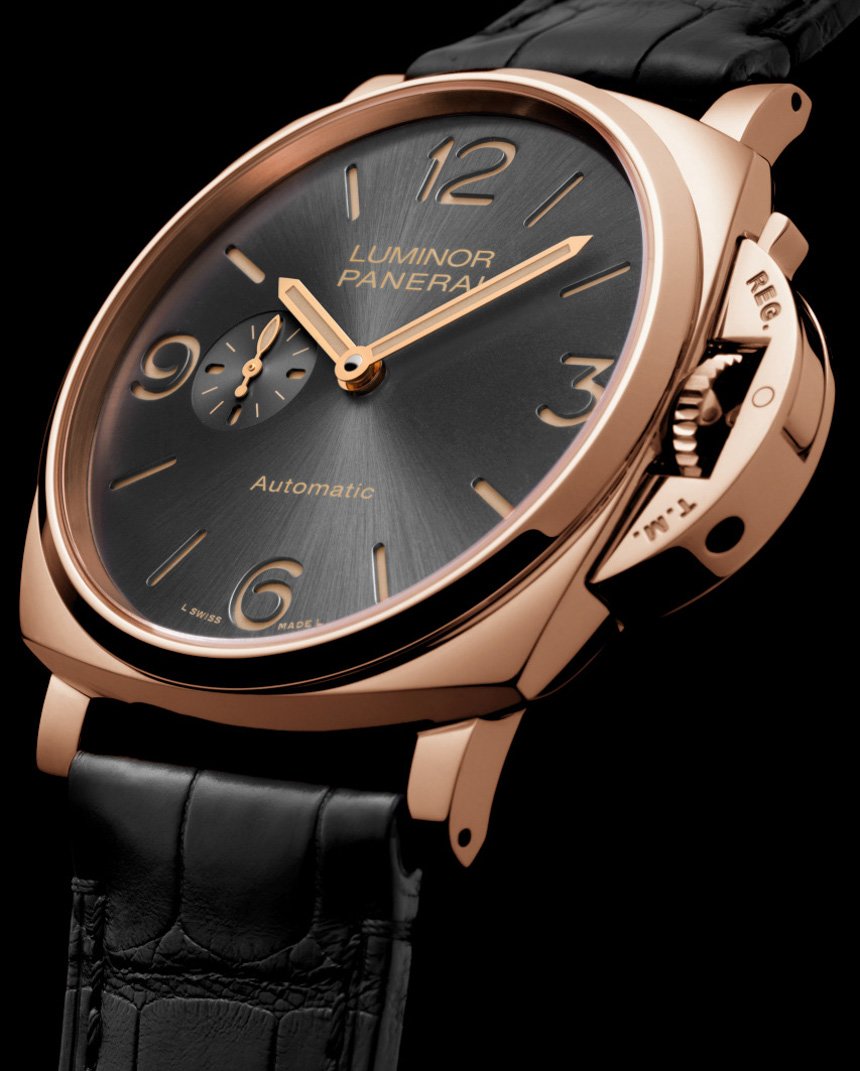
The lugs on this Luminor are slightly angled downward to better fit the wearer’s wrist. Photo by A Blog to Watch.
Even the lugs that connect the bracelet to the case are constructed a certain way. Every Panerai watch is outfitted with twisted or angled lugs to make sure that the watch has a better grip on the wearer’s wrist. Counterfeiters will use straight lugs instead of angled ones because they are cheaper and easier to produce that way.
The Leather Strap
If the watch you’re looking at has a leather strap, pay attention to the stitching. Panerai prides itself on using hand-stitched leather straps. You should be able to see how they sewed the piece together. If the seams are hidden, the strap might have been cobbled together using a machine, or, more likely, just leather glue. The straps should also be held a millimeter away from the case by the twisted lugs to protect both the leather and the hardware from damage. A fake will most likely position the strap flush against the watch’s case, which will wear down the leather and the metal over time.
The buckle of the strap, like the case, should be made with high-quality metal stamped with a reference number and the brand name. If the reference number has a sandy-looking texture or is not present on the buckle at all, you’re looking at a fake.
As always, to be completely sure, we recommend that you take the watch to a jeweler who can assure you of the Panerai piece’s authenticity.



